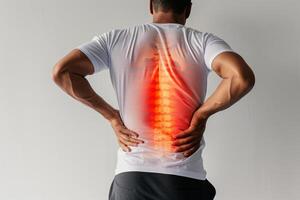Spondy-What? Untangling Common Spine Conditions

Back pain can be confusing, especially when complicated terms are thrown around. Ever been told you’ve got spondylolysis, spondylolisthesis, spondylitis, or spondylosis—and had no idea which one meant what? You’re not alone. These tongue-twisters sound similar but each describes a different issue in the spine. Here’s a clear breakdown of what they mean, how they show up, and what might help.
Spondylolysis
Spondylolysis is a type of stress fracture that occurs in a small part of the vertebra near the back of the spine called the pars interarticularis. It most often affects teenagers or young adults involved in sports that include repeated spinal movements like bending backward or twisting—such as gymnastics, cricket, or diving.
While not always painful, some people notice an ache or discomfort in the lower back, especially during activity. Diagnosis involves a clinical assessment and may include imaging like an X-ray or MRI if needed.
If left unaddressed, spondylolysis can sometimes progress to spondylolisthesis, where one vertebra begins to shift forward over another—so early identification and management can be important.
Spondylolisthesis
Spondylolisthesis happens when one vertebra slips slightly forward compared to the one below it. In younger people, this often follows a stress fracture like spondylolysis. In older adults, it may develop gradually due to natural changes in the spine’s structure over time.
Some people feel no symptoms at all, while others experience lower back pain, tightness through the legs, or occasional tingling or heaviness. Clinical examination and imaging help determine how much movement has occurred and whether nerves are affected.
Spondylitis
Spondylitis refers to inflammation of the spine. The most well-known type is ankylosing spondylitis, which often begins in early adulthood and causes stiffness in the lower back or hips—especially after rest or in the early morning.
Diagnosis is based on your clinical history and may involve blood tests or MRI to look for signs of inflammation. While it’s a long-term condition, early diagnosis and regular movement can make a big difference in how it progresses and how you feel day to day.
Spondylosis
Spondylosis describes age-related changes in the spine, similar to the natural wear and tear that can occur in other joints. The discs between the vertebrae may lose some of their cushioning over time, and small bony changes or joint stiffness may develop.
It’s extremely common—about one in three people may have signs of spinal osteoarthritis on imaging without any symptoms at all. When symptoms do occur, they might include stiffness in the morning, aching after long periods of sitting or standing, or occasional nerve irritation.
Importantly, the severity of changes seen on imaging doesn’t always match how a person feels. Many people with significant changes remain active and mobile, and symptoms are often manageable with the right supports in place.
What Can Help?
If you’re dealing with one of these conditions—or simply wondering if your symptoms might be related—conservative management is often a good place to start.
Physiotherapy: Assess movement, strength, and posture to create a plan that fits your goals and lifestyle.
Exercise physiology: Build long-term strength and conditioning, either individually or in small group classes.
Massage therapy: Help relieve muscle tension contributing to discomfort.
: Improve spinal stability and mobility with programs tailored to your needs, which can be highly effective in managing back pain and enhancing function.
Have a look at or ask us about our individual and small group Pilates sessions to see if they might be right for you.
If you’re unsure where to begin, a physiotherapy assessment can help guide your next steps and connect you to the right supports.
